Applied Archaeological Sciences Laboratory
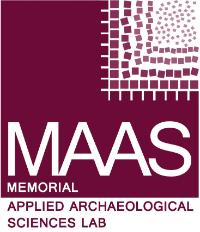
The MAAS lab is designed to facilitate a wide-range of analytical methods in archaeology, including stable and radiogenic isotope analysis (C/N/O/Pb/Sr/S), thin-section preparation, sclerochronology and high-resolution digital light microscopy.
Researchers in this laboratory work with a diverse range of materials to answer questions ranging from the deep archaeological past, to the historic era through the examination of animal and human populations. The lab specializes in the analysis of organic and inorganic hard-tissues including human and animal bone, teeth, hair, shell, coral as well as metals, ceramics and sediments from archaeological contexts worldwide.
Working collaboratively with staff at CREAIT researchers at the MAAS lab have access to state-of-the art instrumentation for geochemical analysis and visualization. In particular, the Micro-Analysis Facility and the Earth Resources Research and Analysis Facility.
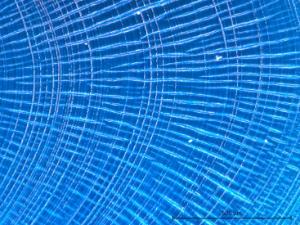
Contacts
- Dr. Meghan Burchell: sclerochronology, digital microscopy, marine hard tissues (shells/corals), stable isotopes (O/C/N), trace elements, petrography, materials science.
Email: mburchell [@] mun.ca - Dr. Vaughan Grimes: biomolecular archaeology, human skeletal biology, stable and radiogenic isotopes (C/N/O/Sr/Pb/S/Nd), forensic anthropology.
Email: vgrimes@mun.ca
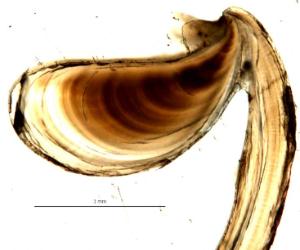
Current Projects
Dr. Meghan Burchell
- Human-environmental interactions in the Salish Sea, British Columbia: archaeological histories of seasonality, subsistence and settlement through high- resolution biogeochemistry (PI, SSHRC Insight Grant, 2015-2019)
- Increasing the capacity for sourcing archaeological material from Newfoundland and Labrador using Scanning Electron Microscopy-Energy Dispersive X-ray Spectroscopy (SEM-EDX) (Seed, Bridge and Multidisciplinary Fund, Memorial University, with Dr. David Grant, Microanalytical Facility, CREAIT)
- Geochemical analysis and population dynamics to understand shellfish harvesting at Port Joli Nova-Scotia (Collaboration with Dr. Matthew Betts, Canadian Museum of History)
- Trace Element Analysis in Bivalve Shells: Refining Palaeoclimate Reconstructions at Archaeological Sites in British Columbia (SSHRC Vice- President’s Research Grant)
Dr. Vaughan Grimes
- Reconstructing diets using carbon and nitrogen isotope analyses of single amino acids (CSIA). In collaboration with Dr. Geert Van Biesen (CREAIT, MUN). We are using these new techniques in a variety of collaborative projects with:
- Drs. Marcello Mannino and Ben Fuller (Aarhus University)
- Dr. Wim Van Neer (Royal Belgian Institute of Natural Sciences)
- Cara Kubiac, PhD Candidate and Prof. Michael Richards (Simon Fraser University)
- San Giuliano Archaeological Research Project (SGARP). (Collaboration with Davide Zori, Colleen Zori, Lori Baker, Alden Smith (Baylor University) and Veronica Ikeshoji-Orlati (Vanderbilt University).
- Biomolecular archaeology study of prehistoric populations from Northeastern North America (SSHRC Insight Grant, 2014-2017, Co-PI with Dr. H. Poinar, McMaster University)
- Investigating lead exposure patterns in Royal Navy populations from the colonial era (SSHRC Insight Grant, 2014-2018, Co-PI with Dr. T. Varney (Lakehead), Dr. D. Cooper, Dr. I. Coulthard and Dr. T. Swanston (Saskatchewan)
- Developing a new chronology for human occupations in Eastern Canada (Memorial University Vice President’s Research Grant and Faculty of Arts grant funded)
- Migration in Neolithic/Chalcolithic and Roman period Spain and Portugal (Collaboration with Dr. A.-M. Silva, University of Coimbra, Portugal)
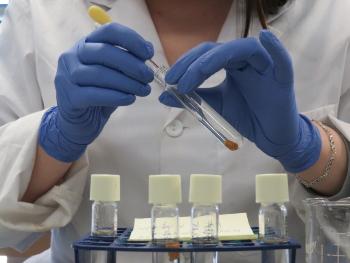
Equipment and Facilities
With ample lay-out space, different areas of the lab are dedicated to pre-treatment of hard-tissues prior to geochemical analysis (shell, bone, teeth, hair, metals, and ceramics), in addition to equipment for collagen extraction & hydrolysis, digital microscopy, and petrography & histology.
- AirClean Ductless Workstation
- Buehler ISOMET 1000 Low-speed precision Saw
- Buehler Metaserve 250 Grinder Polisher
- Low-heat gravity convection oven
- Zeiss Stemi-2000 digital microscope with live-capture camera & Minimo precision drill
- Vitris Benchtop Freeze dryer
- Fisher Scientific Marathon 13K/M Microcentrifuge
- High temperature box Furnace (Thermo Scientific Lindberg/Blue 1200)
- Water Purification System (Zeneer Power TOC System)
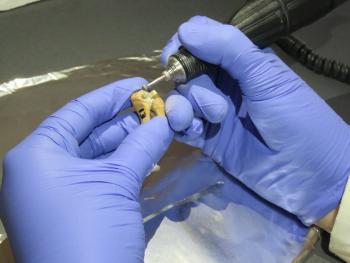
- ThermoFisher Reacti-Vap Evaporator and Reacti-Therm Module
- Ultralow temperature freezer
- Ultrasonic baths
- Heating block
- Eppendorf swing bucket centrifuge
- Micro-balances for sample weighing
- Hand held micro-drill
- Refrigerator and freezer for sample storage and preparation
- Dedicated space and facilities in the Radiogenic Isotope Laboratory, Department of Earth Sciences (low blank HEPA filtered clean boxes, distilled acids, wet chemistry methods element purification) for the extraction and isotope analysis of trace and rare earth elements in a variety of materials.
Sarah Kuehn, Ph.D. student
Euan Wallace, Ph.D student
Cara Kubiak. PhD Candidate, Simon Fraser University (November 2018)
Dr. Marcello Mannino. Associate Professor, Aarhus University, Denmark (July 2018)
Dr. Benjamin Fuller. Post-Doctoral Researcher, Aarhus University, Denmark (July 2018)
Rikke Maring. PhD Candidate, Aarhus University, Denmark (July 2018)
Jessica Hinton. MA Candidate, University of New Brunswick (June 2018)
Sally McGrath, Interdisciplinary PhD, University of New Brunswick (February 2018)
Megan Wong, PhD student, Simon Fraser University (February 2017).
Ciara Ann Gigleux, PhD student, University of Aberdeen (July 2015).
Dr. Kate Britton, Senior Lecturer, University of Aberdeen (July 2015).
- Rand, Asta. Ph.D. (2021). Prehispanic and colonial Maya subsistence and migration: contributions from stable sulfur isotope analysis.
- Sparrow, Anna. M.A. (2020). The history of settlement, subsistence and human-canine relationships in the Salish Sea through stable isotope analyses.
- Bower, Megan. P.hD. (2017). Exploring the Potential of Strontium Isotope Analysis to Detect Archaeological Migration Events in Southern Ontario, Canada.
- Merner, Courtney. M.A. (2017) Reconstructing southeast Iberian Copper Age mobility: a strontium isotope analysis of the Camino del Molino mass burial.
- Leclerc, Natasha. M.A. (2017). Long-term Histories of Clam Harvesting and Seasonal Settlement Strategies on Shíshálh Lands, British Columbia.
- Harris, Alison. M.A. (2017). Stable Isotope Evidence for Amerindian Subsistence in Newfoundland.
- Munkittrick, Jess. M.A. (2016). A Nursery for Sailors: Life histories from the St. John's Royal Naval hospital cemetery, Newfoundland.
- Young-Boyle, Chandra. M.A. (2015) Archaeological otoliths as environmental recorders: high resolution sampling of Pacific cod (Gads macrocephalous) otoliths from Kiska Island, Alaska.
- Hamilton, Tyrone. M.A. (2015). An Experimental Geochemical Characterization Analysis of Archaeological Iron from the Central Contact Period of Newfoundland and Labrador.
- Ellerbrock, Brittany. M.A. (2014). An isotopic reconstruction of diet and origins in an 18th-Century mass burial site at the Fortress of Louisbourg, Nova Scotia.
- Pike, Kelly-Anne. M.A. (2014). Bearing identity: a bicultural analysis of human remains from Old Mission Point, New Brunswick.
- Guiry, Eric. M.A. (2012). Dogs as analogs in stable isotope based human paleodietry reconstructions: assessing the canine surrogacy approach.
- Morry, Alicia. B.A. Hons. (2017) The hunt for red ochre: potential applications of ochre characterization in Newfoundland, Canada.
- Rees, Daniel. B.A. Hons. (2017) A possible case of Litterer-Siwe disease in the Maritime Archaic of the Eastern sub-Arctic: an analysis and retro-diagnosis using scanning-electron microscopy.
- Harris, Alison. B.A. Hons. (2014). Distinguishing archaeological wild and domestic canids from Labrador, NL, Canada with stable carbon and nitrogen isotope analysis of bone collagen.
- Dawe, Kendra. B.A. Hons. (2012). Reconstructing diet of the Beothuk: a biomolecular pilot study.
- Holmes, Andrew. B.A. Hons. (2012). Reconstructing early modern human palaeoenvironments using stable isotope analysis of faunal remains at the site of El Miron, Spain.
- Desson, Rae. B.A. Hons. (2011). An osteological study of human remains from the 17th century fishing plantation site of Dos de Cheval, Newfoundland.
- Hill, Caitlyn. B.A. Hons. (2009). ChAe-13, The Bay Bulls burial: an osteological analysis and possible historical context of unidentified human remains.
Canadian Light Source/Centre canadien de rayonnement synchrotron
Canadian Museum of History, Ottawa, Canada
Johannes Gutenberg University, Mainz, Germany
Lakehead University, Thunder Bay, Canada
Max Planck Institute for Evolutionary Anthropology, Leipzig, Germany
McMaster University, Hamilton, Canada
University de Coimbra, Coimbra, Portugal
University of Manitoba
University of Northern British Columbia
University of Saskatchewan, Saskatoon, Canada
University of Toronto